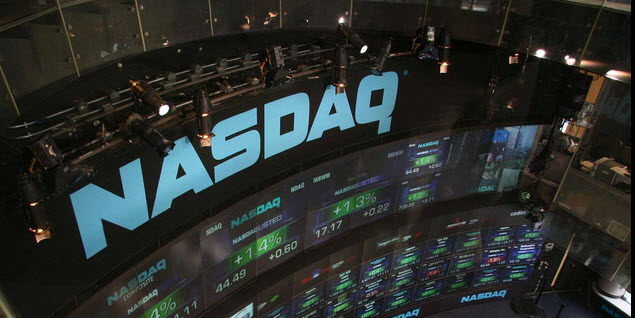Nasdaq is a global electronic marketplace for securities trading and the second-largest stock exchange in the world by market capitalization. Originally launched in 1971 as the world’s first electronic stock market, Nasdaq has developed into a multi-asset exchange platform with operations in equity markets, options, futures, fixed income, and market technology services. It is headquartered in New York City and operated by Nasdaq, Inc., which also manages several other trading venues and financial infrastructure products across North America and Europe.
Unlike traditional exchanges that historically used physical trading floors, Nasdaq has always operated electronically. It was designed to streamline order execution and automate trade matching, offering faster and more efficient access to market pricing. Over time, Nasdaq has built a reputation as the preferred listing venue for technology companies, including some of the largest corporations globally in software, semiconductors, communications, and internet-based businesses.

Structure and Market Model
Nasdaq functions as a dealer-based market. Rather than matching buyers and sellers in an auction format, it relies on market makers—registered participants who provide continuous bids and offers for securities and commit to trading certain volumes. These market makers ensure liquidity by standing ready to buy or sell at publicly quoted prices. Each security listed on Nasdaq may have multiple competing market makers, which promotes tighter spreads and deeper order books.
Nasdaq is fully electronic, meaning all trades are executed through its centralized matching engine without any human intermediaries. This system allows for faster order processing and has been adopted by a wide range of market participants, including institutional investors, broker-dealers, proprietary trading firms, and retail brokers.
The exchange operates through three tiers of listings: the Nasdaq Global Select Market, the Nasdaq Global Market, and the Nasdaq Capital Market. Each tier serves different types of issuers based on size, financial history, and corporate governance standards. Despite structural differences, all tiers operate on the same electronic system and are subject to the same trading rules.
Listing Requirements and Market Access
Companies seeking to list on Nasdaq must meet financial and corporate governance criteria set by the exchange and approved by regulatory authorities. These include requirements for market capitalization, earnings or revenue, share price, and shareholder equity. In addition, listed firms must maintain certain levels of liquidity and public float and meet disclosure standards comparable to those on other major exchanges.
Nasdaq has positioned itself as a platform for innovative and high-growth companies, especially in technology and biotechnology sectors. The listing process is tailored to support firms at different stages of maturity. Startups and emerging businesses often opt for the Nasdaq Capital Market tier, while large multinational corporations may qualify for the Global Select Market, which has more stringent requirements.
Once listed, companies must comply with ongoing reporting obligations under U.S. securities laws, including the timely disclosure of earnings, material events, and corporate actions. Governance standards enforced by Nasdaq also include board independence, audit committee rules, and shareholder communication requirements.
Trading Activity and Market Role
Nasdaq is home to many of the world’s most widely traded equities, including Apple, Microsoft, Amazon, Alphabet, Meta, and Nvidia. The exchange accounts for a significant portion of total U.S. equity trading volume and serves as a key benchmark for market performance. The Nasdaq Composite Index, which includes nearly every stock listed on the exchange, is widely followed as a barometer of the technology sector and growth stocks.
Nasdaq has become a central venue for price discovery, particularly in the electronic trading era. Its market data feeds are integrated into institutional trading platforms, broker systems, and financial research tools. Real-time price quotes, depth of book information, and historical trade data from Nasdaq inform algorithmic models and portfolio management decisions across global markets.
Because of its speed and efficiency, Nasdaq is particularly well suited to high-frequency trading strategies and other automated execution techniques. Its architecture supports large-scale order submission, rapid cancellations, and continuous price updating. These features are necessary for market participants who operate in fast-moving, low-margin environments where latency can materially affect outcomes.
Regulation and Oversight
Nasdaq operates as a self-regulatory organization under the oversight of the U.S. Securities and Exchange Commission (SEC). It enforces its own rules among listed companies and member firms, while also working with regulatory bodies to ensure compliance with federal securities laws. Surveillance systems monitor trading activity for signs of manipulation, insider trading, or abusive practices.
As part of its regulatory duties, Nasdaq maintains a listing qualifications department, conducts periodic reviews, and publishes notices of delisting or non-compliance when companies fail to meet minimum standards. The exchange also provides tools and support for investor relations, proxy services, and governance consulting to help issuers meet compliance expectations.
In addition to its role as a listing and trading venue, Nasdaq offers market technology to exchanges and regulators around the world. Its systems power operations for other equity, derivatives, and clearing platforms, making Nasdaq not only a marketplace but a provider of financial infrastructure.
Technology and Innovation
Nasdaq has consistently positioned itself at the forefront of market technology. From its inception as the first fully electronic stock market, it has continued to develop infrastructure that supports high-throughput, low-latency trading. Its matching engine handles thousands of transactions per second, and its network is designed to scale with increasing volume and complexity.
The exchange has also invested in areas such as cloud computing, artificial intelligence, and cybersecurity. These efforts aim to improve not only the trading experience but also risk management, regulatory reporting, and market surveillance. Nasdaq’s technology division provides software solutions to other exchanges, banks, and regulators, contributing to the modernization of capital markets worldwide.
In recent years, Nasdaq has expanded its focus to include sustainable finance, ESG (environmental, social, governance) disclosures, and digital asset infrastructure. While it has not launched a centralized cryptocurrency market, it has participated in partnerships and initiatives to provide price indexes and explore regulatory-compliant frameworks for digital asset trading.
Final Thoughts
Nasdaq has evolved from a niche electronic marketplace to a globally recognized exchange operator and financial technology provider. Its structure promotes speed, transparency, and competitiveness, making it an essential part of the modern financial ecosystem. As a listing venue, it continues to attract companies that prioritize innovation, scale, and growth potential. As a trading platform, it delivers the performance and functionality required by today’s market participants.
The exchange’s role in price discovery, capital formation, and investor access remains central to the functioning of global equity markets. Its adaptability, emphasis on technology, and regulatory engagement have positioned it to respond to shifts in how capital is raised, allocated, and managed.
For issuers, Nasdaq offers a gateway to global capital and visibility. For investors, it provides liquidity, transparency, and efficiency. And for regulators and infrastructure providers, it sets standards that shape the structure of markets far beyond its own listings.





